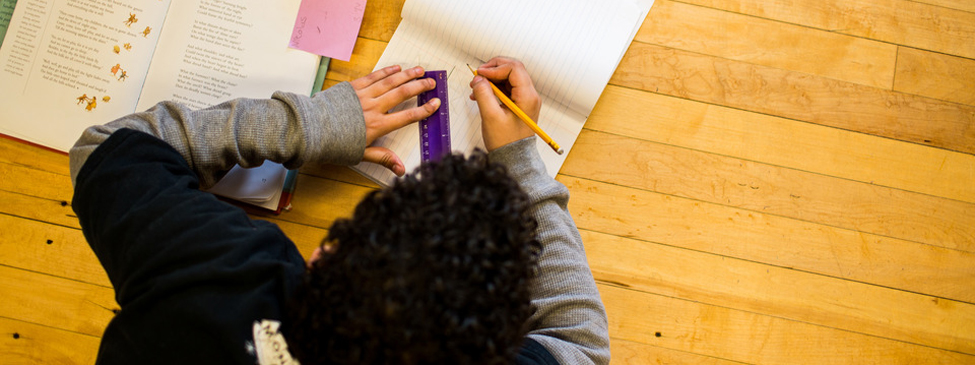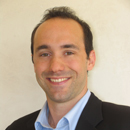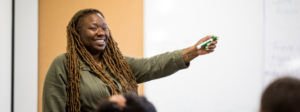I have worked in public education for 12 years, half of them in and around the classroom. But it was only recently that I’ve begun to consider just how much social justice—not necessarily one set of positions or priorities, but getting to know your students and their contexts—affects my work. Sadly, I’m not alone in coming to this conclusion late in the game.
I grew up thinking I’d be a doctor—just like my dad, older brother, and sister. After running UCLA’s Special Olympics program for two years in college, I decided I wanted education to be my career. When I got my acceptance letter from Teach For America in the mail, it felt like a dream come true.
[related]
I moved to Phoenix and taught math and science to 100 Latino middle school students in a small charter school dedicated to bilingual education and preparing all students for college. I focused on classroom management, curriculum design, and effective instruction. I felt I was making a difference, but it wasn’t until years after I left the classroom I realized I was missing a crucial component: I wasn’t spending enough energy getting to know who my students were.
I had no clue, for instance, how many of my students’ families were being torn apart by deportation. I was not aware that some would not be welcome in the United States after high school, let alone be able to afford the college experience we promised them. I was laser-focused on teaching them the skills I thought were necessary to succeed. I made instruction my priority, not their lives beyond academics.
Why does that matter? To answer this, I look to one of my colleagues during my time as a teacher, Marilyn. Marilyn taught social studies and language arts to the same students I taught math and science. As I was learning the basics, she was forming partnerships with local community colleges that allowed our eighth graders to see their potential futures firsthand. While I hit roadblocks with students, she built relationships with parents that transformed student engagement. Although Marilyn was a new teacher, and a career changer, she taught me an important lesson: Thinking about education more broadly makes a difference.
It would be convenient to excuse myself and hide behind the fact that teaching is difficult. That’s not good enough, though. The reality is, we need teachers—both new teachers and more experienced ones—to understand the social context of their work far faster than I did.
But how?
I don’t have the answer, but I do have some clues. First, I think teachers should follow the lead of organizations that supported me and how they have evolved: from focusing solely on what happens in the classroom to looking beyond those four walls at the broader community context. Since I joined Teach For America, the organization has doubled-down on working with community partners and adapting to local needs. TNTP is focusing on this internally and externally, too. In the last two years, we’ve created a Diversity Leadership Council to build a more inclusive working culture, launched a fellowship aimed at improving outcomes for young men of color, and put a spotlight on amazing educators who make a habit of using relationships with students as the foundation for success in the classroom.
Second, I believe we can show our new educators the truth. I’ve often heard school leaders say they do not want their teachers to see how their students live for fear that teachers would lower expectations. It seems to me, though, that teachers without a firm grasp of their own purpose in the classroom are ill-equipped to help their students understand the purpose of education. Give teachers the facts and help them make sense of them. Help them build their careers on a solid foundation.
[subscribe]
Finally, we need to get outside of our echo chambers—that place where we adopt beliefs and choose influences that just reinforce our current worldviews. Why did I never visit one of my students at their homes? Why were the first 20 books I read about education focused on skills and not the purpose and context of my life’s work? Why have so few of my professional mentors come from the communities we are trying to serve, and why have I not sought influences that push my thinking?
For me, the first step to learning about the social justice purpose of my work is to accept that I do not have all the answers. The second is to realize that the people and organizations closest to me may not have them either. I have a lot of work to do to seek different influences and learn about the actual priorities of the students and communities I’m working in—and so do the organizations preparing our next generation of teachers.








